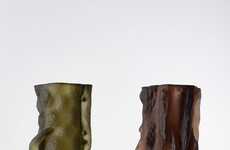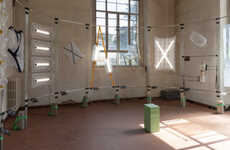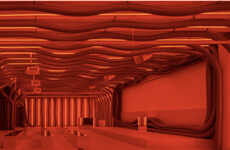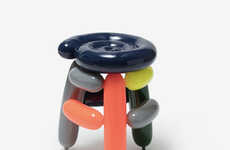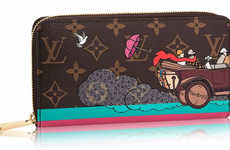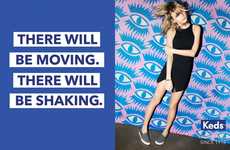
This Inflatable Art Project Recreates Organs of the Human Body
David Ingram — October 14, 2015 — Art & Design
References: kerryhughes & boingboing.net
London-based artist, maker and illustrator Kerry Hughes has moved on to the medium of inflatable art that take the form of balloon anatomy.
Calling his work 'Pneumatic Anatomy,' Hughes uses simple inflatable plastic to recreate the lungs and digestion system of the human body. Pink and white balloons replace blood and tissue that twists, turns and swirls against one another to form the intricate bronchioles and esophagus found in a pair of human lungs. The human digestive system has also been rendered to become a whimsical floating inflatable art structure.
Carefully detailed and defined, these pieces form an interesting perspective of the human anatomy that cleverly combines the idea of a medical textbook with birthday balloon art for memorable and lasting effect.
Calling his work 'Pneumatic Anatomy,' Hughes uses simple inflatable plastic to recreate the lungs and digestion system of the human body. Pink and white balloons replace blood and tissue that twists, turns and swirls against one another to form the intricate bronchioles and esophagus found in a pair of human lungs. The human digestive system has also been rendered to become a whimsical floating inflatable art structure.
Carefully detailed and defined, these pieces form an interesting perspective of the human anatomy that cleverly combines the idea of a medical textbook with birthday balloon art for memorable and lasting effect.
Trend Themes
1. Inflatable Art - Artists can explore the use of inflatable materials to create unique and attention-grabbing artworks.
2. Anatomical Sculptures - Creating anatomically accurate sculptures using unconventional materials presents an opportunity for innovative and thought-provoking art creations.
3. Whimsical Structures - The use of playful and imaginative design elements in art installations can create captivating visual experiences.
Industry Implications
1. Art - The art industry can incorporate inflatable materials to push the boundaries of traditional art forms.
2. Medical Education - Medical schools and educational institutions can use anatomical sculptures as engaging and interactive teaching tools.
3. Event Planning - Event planners can consider incorporating inflatable art structures for unique and memorable event decorations.
5.2
Score
Popularity
Activity
Freshness



